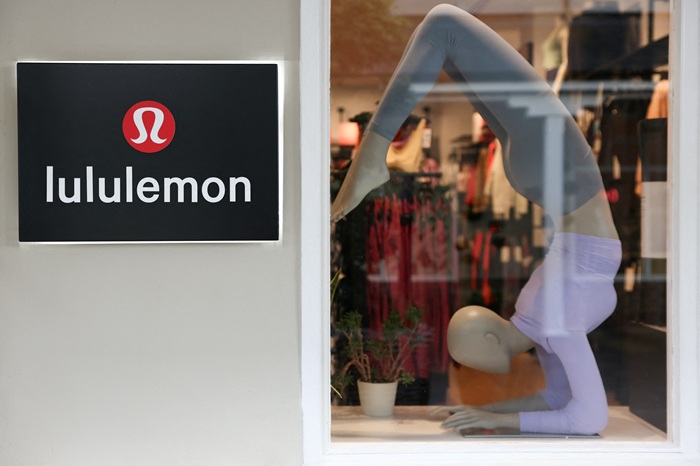
As the global apparel economy enters the final quarter of 2025, trade flows across major markets reveal a sector facing contradictory currents, some markets still soft from inflation-linked demand fatigue, while others rise on renewed consumer confidence and resilient supply chains. Wazir Advisors’ ‘Global apparel trade & retail update report’ for November 2025 gives an overview of latest apparel consumption and trade data for major supplier and buyer nations.
The study on September and October data across imports, exports and retail performance suggest a slow but unmistakable reconfiguration of global sourcing preferences, with Asia’s manufacturing hubs facing uneven momentum and Western markets exhibiting divergent signs of recovery.
Together, these indicators paint a portrait of a global industry at an inflection point, one where brands are recalibrating sourcing footprints, consumers are rediscovering discretionary categories, and traditional export leaders are being challenged by shifting cost and compliance dynamics.
Western import markets split
In September 2025, apparel imports into the world’s largest consumer markets shows mixed results. The US, typically the bellwether of global fashion demand, reported imports of $7.3 billion, a 6 per cent year-on-year decline. This drop, continuing through most of 2025 reflects a consumer base still restrained by sticky inflation and a shift toward value-driven purchases. Retailers have also been cautious in replenishing inventories, opting for leaner stock positions going into the holiday season.
In stark contrast, Europe’s demand revival grew. The EU’s apparel imports hit $10.1 billion, a 13 per cent increase over the previous year, indicating a clear rebound in consumer sentiment. The region has benefited from moderating inflation, an uptick in tourism spending, and a strong appetite for fast-fashion and value fashion segments.
The UK, despite economic pressures earlier in the year, posted one of the strongest rebounds globally. With imports rising 19 per cent YoY to $2.3 billion, the UK is witnessing a reawakening of apparel consumption, driven partly by improved wage growth and a return of in-store shopping.
Asian consumer markets also showed resilience. Japan’s imports grew 14 per cent YoY to $2.5 billion, powered by demand for premium casualwear and the continued shift toward lifestyle-oriented apparel.
Collectively, the data highlights that demand in Western Europe is now outpacing the US, reshaping sourcing priorities for global manufacturers.
Asia’s heavyweights slow in exports, Europe’s niche players grow
On the export side, 2025 has turned into a year of unpredictable momentum. Exporters traditionally viewed as global giants viz. China, Bangladesh, and India faced declines, while several smaller or emerging markets recorded outsized growth.
China’s sharp slowdown marks a structural shift. Still the world’s largest apparel exporter, reported $10.6 billion in October exports, down 16 per cent YoY. The drop is due largely to rising labor costs, compliance pressures, nearshoring by Western brands, and the gradual relocation of basic manufacturing to Southeast Asia.
Bangladesh and India declines reflect a tough global pricing cycle. Bangladesh’s October exports came in at $3.0 billion, down 9 per cent YoY, underscoring ongoing price pressures from global buyers who are shifting orders to lower-cost alternatives such as Myanmar or Cambodia. India fared similarly, with exports down 13 per cent YoY to $1.1 billion in October. Indian exporters have faced headwinds due to a combination of weak US demand, fluctuating raw material prices, and intensifying competition from Vietnam and Türkiye.
Meanwhile Vietnam continues to consolidate its position as a stable sourcing destination, posting $3.9 billion in exports in July, a modest but steady 3 per cent YoY increase. Its competitiveness in synthetics and athleisure categories remains an advantage. Sri Lanka, despite its macroeconomic struggles, recorded $0.40 billion in September exports, up 3 per cent YoY, supported by niche segments such as intimatewear and performance apparel.
Turkey’s decline vs Europe’s rising stars
Türkiye, once the fastest-growing nearshoring hub for Europe, saw exports fall 9 per cent YoY in August to $1.5 billion, a reflection of persistent currency volatility and softening EU demand for mid-market categories. Conversely, Poland and Italy emerged as the standout performers among European manufacturers.
• Poland’s July exports rose 27 per cent YoY to $1.4 billion, driven by its integrated fast-fashion production capabilities for EU brands.
• Italy recorded $3.1 billion in July exports, up 12 per cent, confirming its leadership in luxury, leatherwear, and premium fashion.
• Spain posted a steady 3 per cent YoY increase in August to $1.3 billion, showcasing resilience in mid-premium and fast-fashion segments. Pakistan’s quiet rise
Pakistan’s apparel exports touched $0.82 billion in June, growing 9 per cent YoY, supported by strong demand for knitwear and home textiles, and benefiting from competitive pricing relative to regional peers.
India and the UK show a return to fashion spending
Retail performance in major consumer markets indicates a tentative return of discretionary spending. In India, apparel retail sales in August 2025 grew 7 per cent over the previous year. This increase reflects a revival in festive-season shopping, stronger mall footfall, and steady traction for value fashion now the fastest-growing segment in the country’s retail ecosystem.
The UK also showed signs of recovery, with apparel store sales rising 5 per cent YoY in October 2025. This gain comes after months of suppressed demand and highlights consumers’ gradual return to full-price purchases. These retail growth align with rising import demand seen in both markets, reinforcing a positive near-term outlook for brands operating in these geographies.
Indications of a rebalancing world
The second-half data from Wazir Advisors’ report 2025 suggests that global apparel trade is showing subtle but steady rebalancing.
• Europe is becoming the growth engine of global apparel demand, outpacing the US for the first time in years.
• China’s export slowdown marks a structural shift, not a cyclical one accelerating diversification of sourcing.
• South Asia’s exporters face pressure, especially India and Bangladesh, as buyers push for lower costs and quicker lead times.
• Emerging hubs (Poland, Pakistan, Sri Lanka) are gaining relevance with specialized or cost-competitive offerings.
• Retail demand recovery in markets like India and the UK indicates a stabilizing consumer environment heading into 2026. As brands plan their sourcing strategies for the coming year, the message is clear: the era of predictable trade flows is over. The apparel industry is entering a new cycle defined by agile sourcing, regional manufacturing ecosystems, and a more volatile but opportunity-rich global market.











